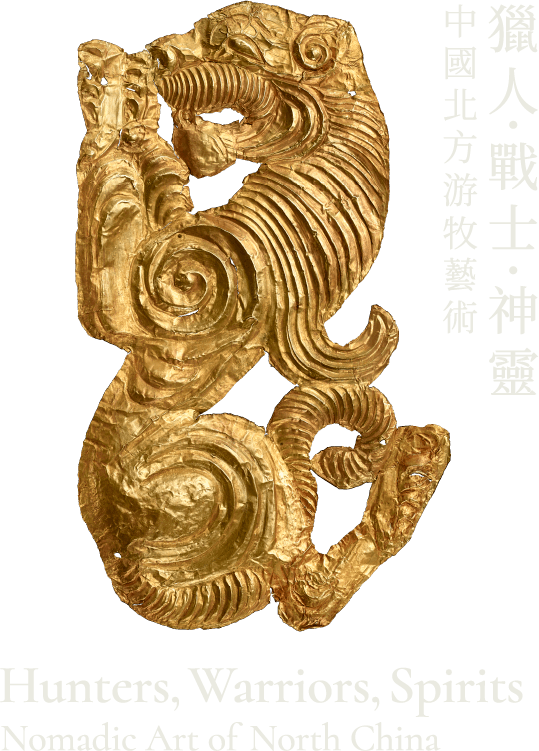Land and People
The steppe and boreal forests in North China were home to indigenous groups commonly known under the umbrella term "Hu" in Chinese annals. Some—such as the Xiongnu, Xianbei, and Rouran—were largely nomads; others, like the Rong and Di, were not. Often the line is hard to draw as nomadism was not evenly spread; groups considered "typical" nomads also frequently had semi- or non-nomadic components. Recently, the term "China's Northern Zone" usually refers to territories occupied by the northern Hu. At the same time, these territories expanded and contracted according to the ebb and flow of the pastoral nomads' military and political power.
China's Northern Zone was connected to the broader eastern Eurasian steppes, and thus linked the Middle Kingdom to South Siberia, Mongolia, and eastern Kazakhstan, as well as to lands on the other side of the Eurasian continent. Several factors, such as the growth of the Chinese state(s), climatic change, and the spread of agriculture, contributed to the northward expansion of the Northern Zone, though the nomads also periodically extended their territories to the south.
Nomads Dwelling in an Ocean of Grass
Uvs, MongoliaPhotograph
2006
The Ancient Silk Road in the Gobi Desert
MongoliaPhotograph
2016
Tent Dwelling of a Nomad
Hovsgol, MongoliaPhotograph
2005
Land and People
The Material Culture of the Ancient Nomads
The first nomads of the eastern Eurasian steppes emerged in the mid-1st millennium B.C.E., surviving thanks to their technological innovations, such as large-scale domestication of sheep and cattle, the creation of portable, conical lodges with felt covers (known as ger) and, most importantly, the introduction of horseback riding. These gave the nomads a distinct advantage over other groups in the region.
The material culture of the earliest nomads centred on the animal iconography with which they decorated horse-gear, weapons, and jewellery. The earliest such decorations date back to the 13th century B.C.E. (the Shang dynasty), reflecting the ancient Neolithic tradition of rock art. By the 8th century B.C.E., horse-gear, jewellery, and personal adornments with zoomorphic motifs became widespread throughout the eastern Eurasian steppes.
Land and People
The Orochen
Nomadism developed in different ways; in the boreal forest of North China subsistence hunting was widespread, whereas in the “forest-steppe” transitional zone, mixed economies combined hunting with pastoral activities. In the Great and Lesser Khingan Mountains, in Inner Mongolia and the northern Heilongjiang province, nomadic hunting continued until the mid-20th century.
The Orochen are the last hunters of China’s northern forest. Their language is linguistically part of the Tungusic complex, closely related to the various Altai-Tungusic peoples who inhabited Northeast China. Like their ancestors, the Orochen wore skin clothing and made extensive use of birch bark and animal hide to fashion household objects, tools, and even large vessels such as saddlebags.
He-Centaur
Bronze2009
Dashi Namdakov's Art Foundation Collection
She-Centaur
Bronze2009
Dashi Namdakov's Art Foundation Collection
Amazon on the Leopard
Bronze2018
Dashi Namdakov's Art Foundation Collection
Bukha-Noion
Bronze, stone2002
Dashi Namdakov's Art Foundation Collection
Dagger with Bell-Pommel
BronzeLate Shang Dynasty (13th–11th century B.C.E)
Socketed Axe-Head with Tiger Motif
BronzeSpring and Autumn Period (770–476 B.C.E.)
Hing Chao Collection
Sectional Pectoral with Deer and Feline Motifs
Gold6th-4th century B.C.E.
Mengdiexuan Collection
Horse Harness Parts with Geometric Patterns
Bone8th-3rd century B.C.E.
Mengdiexuan Collection
Ram-Head-Pommel Knife
Bronze13th–12th century B.C.E.
Hing Chao Collection
Male Roe Deer Skin Robe
Roe deer skin2006
Hing Chao Collection
Skin Bag
LeatherCirca 1980s
Hing Chao Collection
Large Birch Bark Box for Clothing
Birch barkEarly 21st century
The Orochen Foundation Collection





























